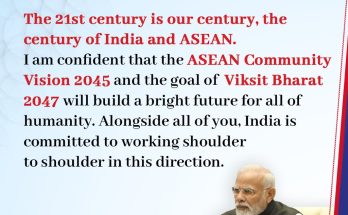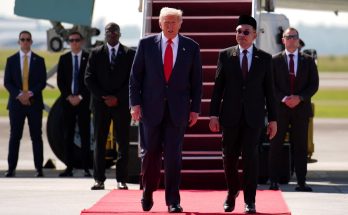The incident involving the sinking of a fishing vessel off the coast of Gujarat on New Year’s Day has raised more questions than it has answered. To start with, the Ministry of Defence press release announcing the event was itself less than categorical. While its headline noted that the Coast Guard had intercepted a “suspect boat carrying explosives”, the text of the release did not thereafter mention “explosives”, though it did say eventually that the crew set the boat on fire “which resulted in an explosion”. All it said was that as per intelligence inputs on December 31, a fishing boat from Keti Bandar, a small port near Karachi, “was planning some illicit transaction in Arabian Sea (sic)”. It did not mention the word “terrorist” or “terrorism” either.
To make up for it, as it were, the Minister of Defence Manohar Parrikar spoke up two days later, on Monday morning, when he declared that the men in the boat “were suspected terrorists… mainly because they committed suicide”; smugglers would have simply surrendered. Since the Coast Guard has not managed to pick up any body or any other debris, the minister’s claim is on the basis of circumstantial evidence.
There are several problems with the story as it has been put out and many of these have been listed in the internet or in newspapers. But what the incident does seem to bring out is the continuing dysfunction of our intelligence system and the high levels of incompetence in matters of national security. First, the National Technical Research Organisation had no business to directly provide the intercept to the Coast Guard, along with the Navy. Second, since the Navy is the lead agency in coastal security, the Coast Guard should have taken action after consulting with the Navy brass.
The NTRO is supposed to deal with collecting information through high-tech means. But even if they got the intercept, they should have given it to the Multi-Agency Centre (MAC), which has been specially created to coordinate and analyse inputs relating to terrorism from different sources. The fishing vessel drama was relatively slow moving. The intercept happened a day or two earlier and there was more than enough time for the MAC to have assessed and analysed it. In the world of intelligence, one bit of information is not particularly useful, unless it is put together with other pieces and put through an analytical process. In the case of the Mumbai attack of 2008, the key failure was not in the information received there was information about the Pakistani plan and even the movement of the terrorist vessel the problem was in our inability to effectively analyse the information and understand how events would unfold on the ground.
In this case, too, in an alternative scenario, the boat could have been allowed to make its way to the shore, shadowed by the Coast Guard, or, better still, the marine commandos of the Navy who are trained in stealthy operations. The terrorists could have been quickly rounded up when they landed and India would have had a coup of sorts in exposing Pakistan once again. On the other hand, if the aim of the boat was to transfer weapons or explosives to another vessel, too, the Coast Guard could have waited and caught both the terrorists and their contacts red handed. Instead action took place at the very edge of India’s disputed maritime boundary with Pakistan, making pursuit difficult.
Unfortunately, all we have now is a lot of red faces. People are not sure as to what exactly happened. Defence Minister Parrikar says that the fact that they committed suicide indicates that they were terrorists. On the other hand, the LeT terrorists have consistently preferred to fight and die, rather than simply commit hara-kiri. In that scenario, the alleged terrorists in the boat would have allowed the Coast Guard to approach their boat and then opened fire and died in the process. The idea that the four people simply went down into the hold of the boat and set it on fire does not quite jell.
The government claims would be more credible if they released the pictures of terrorists on the boat. According to some reports citing the Coast Guard, the people in the boat were not dressed like fishermen. Then, how were they dressed? Surely if the boat was being tracked and then approached by the Coast Guard ship, we should have more and better pictures of how the action proceeded.
In a situation like this, it is unlikely that we will learn the whole truth. But the government needs to urgently examine the sequence of events and ask the NTRO as to why it has gotten into the business of directly supplying intercepts to field agencies. This is simply not its mandate. The NTRO is supposed to provide raw intelligence to the various agencies who are then supposed to analyse it. In the case of terrorist-related information, the MAC has been set up to prevent anything falling through the cracks. In this case, clearly something has.
Second, the government needs to find out just why the Navy was bypassed. According to the government decision in the wake of the Mumbai attack, the responsibility for coastal security has been given to the Indian Navy. In other words, if the Coast Guard is launching a major operation, it needs to do so with the permission of the Navy chain of command, especially since, according to reports, the Navy had also been given the same information and had assessed that it did not involve any threat to national security. There seems to be a facile assumption in our security establishment that the next terrorist attack, when it comes, will be like the last one. Hence the scenarios of seaborne Mumbai attack or the Kandahar hijack are being mooted. The reality probably will be a twisted surprise. The agencies should worry about the outlier scenarios, rather than obsessing about their past failures.
(The writer is a Distinguished Fellow at Observer Research Foundation, Delhi)
Courtesy: Mid-Day
Author Profile
- India Writes Network (www.indiawrites.org) is an emerging think tank and a media-publishing company focused on international affairs & the India Story. Centre for Global India Insights is the research arm of India Writes Network. To subscribe to India and the World, write to editor@indiawrites.org. A venture of TGII Media Private Limited, a leading media, publishing and consultancy company, IWN has carved a niche for balanced and exhaustive reporting and analysis of international affairs. Eminent personalities, politicians, diplomats, authors, strategy gurus and news-makers have contributed to India Writes Network, as also “India and the World,” a magazine focused on global affairs.
Latest entries
 DiplomacyOctober 4, 2025UNGA Resolution 2758 Must Not Be Distorted, One-China Principle Brooks No Challenge
DiplomacyOctober 4, 2025UNGA Resolution 2758 Must Not Be Distorted, One-China Principle Brooks No Challenge India and the WorldJuly 26, 2025MPs, diplomats laud Operation Sindoor, call for national unity to combat Pakistan-sponsored terror
India and the WorldJuly 26, 2025MPs, diplomats laud Operation Sindoor, call for national unity to combat Pakistan-sponsored terror India and the WorldJuly 25, 2025When Fire Ends, Diplomacy Begins
India and the WorldJuly 25, 2025When Fire Ends, Diplomacy Begins India and the WorldJuly 16, 2025Operation Sindoor and its Aftermath: India’s Successful Diplomatic Outreach
India and the WorldJuly 16, 2025Operation Sindoor and its Aftermath: India’s Successful Diplomatic Outreach







